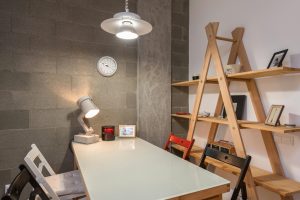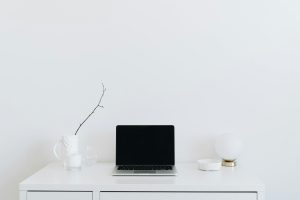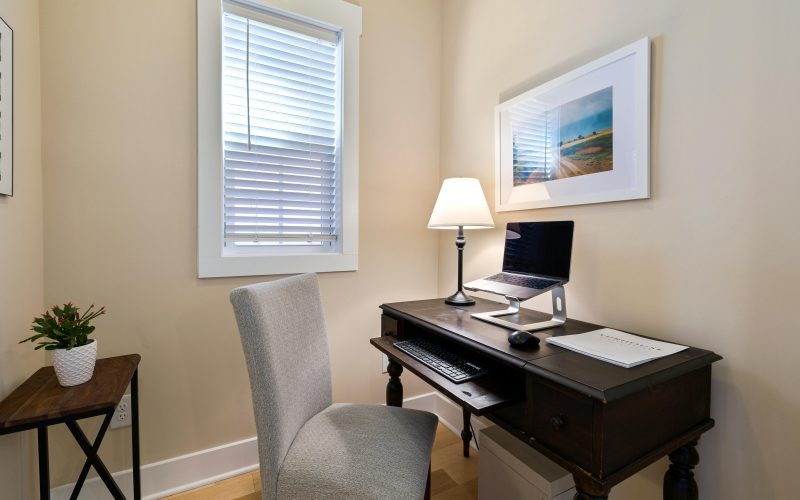Introduction
With the rise of remote work, having a functional home office is no longer a luxury—it’s a necessity. Whether you work from home full-time, run a business, or need a productive space for occasional tasks, setting up an efficient workspace can boost productivity, improve focus, and enhance comfort.
A well-organized home office should have the right furniture, lighting, and storage solutions to support a stress-free work environment. In this guide, we’ll explore how to design an ergonomic, clutter-free, and inspiring home office that helps you work efficiently without distractions.
What is a Functional Home Office?

A functional home office is a dedicated space designed to support work efficiency, comfort, and organization. Unlike makeshift workspaces like dining tables or couches, a well-structured home office has ergonomic furniture, adequate lighting, and the right equipment to create a professional environment at home.
The key elements of an effective home office include:
- A comfortable desk and chair for long hours of work.
- Proper lighting to reduce eye strain and improve focus.
- Storage solutions to keep the workspace clutter-free.
- Noise reduction strategies for a distraction-free environment.
Creating a well-optimized workspace at home can increase productivity, improve posture, and reduce stress, allowing you to stay motivated and efficient throughout the day.
How to Choose the Right Home Office Location
Selecting the right spot for your home office is crucial to creating a distraction-free and comfortable workspace.
Factors to Consider:
- Quiet Environment: Choose a location away from household noise and foot traffic. A spare room or a quiet corner in your bedroom can work well.
- Good Lighting: Natural light can boost mood and productivity. If natural light is limited, opt for bright, adjustable LED desk lamps to prevent eye strain.
- Adequate Space: Ensure enough room for your desk, chair, and essential office equipment to avoid feeling cramped.
- Separation from Living Spaces: Having a separate workspace helps create a psychological boundary between work and home life, improving work-life balance.
A well-chosen location reduces distractions, enhances focus, and makes your home office a productive space.
Selecting the Right Home Office Furniture

The right furniture is the backbone of an ergonomic home office. Poor seating and improper desk height can lead to discomfort, fatigue, and back pain.
Essential Home Office Furniture:
- Ergonomic Chair: Investing in a high-quality, adjustable office chair can prevent posture-related health issues. Look for lumbar support, cushioned seating, and adjustable armrests.
- Spacious Desk: Your desk should be large enough to accommodate your laptop, monitor, keyboard, and other essentials while leaving enough workspace.
- Standing Desk Option: If possible, consider a height-adjustable desk to alternate between sitting and standing, which improves circulation and reduces strain.
- Storage Solutions: Use filing cabinets, shelves, or desk organizers to keep essential items within reach without cluttering your workspace.
Selecting ergonomic furniture ensures comfort, prevents strain, and supports long-term productivity.
Lighting and Its Impact on Productivity
Proper home office lighting can reduce eye strain, improve concentration, and create a pleasant work atmosphere.
Best Lighting Tips for a Home Office:
- Maximize Natural Light: Position your desk near a window to benefit from daylight.
- Use Task Lighting: A desk lamp with adjustable brightness helps reduce glare and shadows while reading or typing.
- Avoid Harsh Overhead Lighting: Soft, warm LED bulbs create a comfortable working environment.
- Use Blue Light Filters: If you work on a screen for long hours, blue light filters or glasses can protect your eyes from digital strain.
Proper lighting enhances focus, reduces fatigue, and creates a comfortable work ambiance.
Decluttering and Organizing Your Home Office
A clutter-free workspace reduces stress, improves efficiency, and promotes a clear mind.
Tips for Organizing Your Home Office:
- Use Cable Management Solutions: Tidy up messy cords with cable organizers to maintain a neat look.
- Utilize Vertical Storage: Wall shelves and hanging organizers help maximize space.
- Declutter Weekly: Remove unnecessary papers, files, and accessories to keep your desk clean.
- Label and Categorize Items: Using storage bins, file holders, and drawer dividers helps locate items easily.
An organized workspace increases productivity, saves time, and promotes a professional work environment.
Technology and Equipment for a Smart Home Office
Equipping your home office with essential gadgets and technology ensures a smooth workflow and better efficiency.
Must-Have Home Office Equipment:
- High-Speed Internet: A stable Wi-Fi connection prevents interruptions during meetings and tasks.
- Dual Monitors or Large Screen: Extra screen space boosts multitasking efficiency.
- Noise-Canceling Headphones: Reduces background noise, allowing better focus.
- Wireless Keyboard and Mouse: Enhances comfort and desk organization.
- Backup Power Supply: A UPS or power backup protects against sudden power failures.
Having the right tools and technology streamlines work, improves communication, and boosts efficiency.
Table: Essential Components for a Functional Home Office
| Component | Purpose | Recommended Features |
|---|---|---|
| Desk | Workspace surface | Spacious, adjustable height |
| Ergonomic Chair | Comfort and posture support | Lumbar support, adjustable armrests |
| Lighting | Reduces eye strain | LED desk lamp, natural light |
| Storage | Keeps workspace organized | Shelves, filing cabinets |
| Tech Equipment | Improves efficiency | High-speed internet, noise-canceling headphones |
Conclusion
Creating a functional home office is essential for maximizing productivity, comfort, and efficiency. By choosing the right location, ergonomic furniture, proper lighting, and organized workspace, you can design a home office that supports long hours of focused work.
Key Takeaways:
- Select a quiet, well-lit space for better concentration.
- Invest in ergonomic furniture to prevent strain and discomfort.
- Maintain an organized and clutter-free environment for efficiency.
- Use high-quality technology for seamless workflow.











